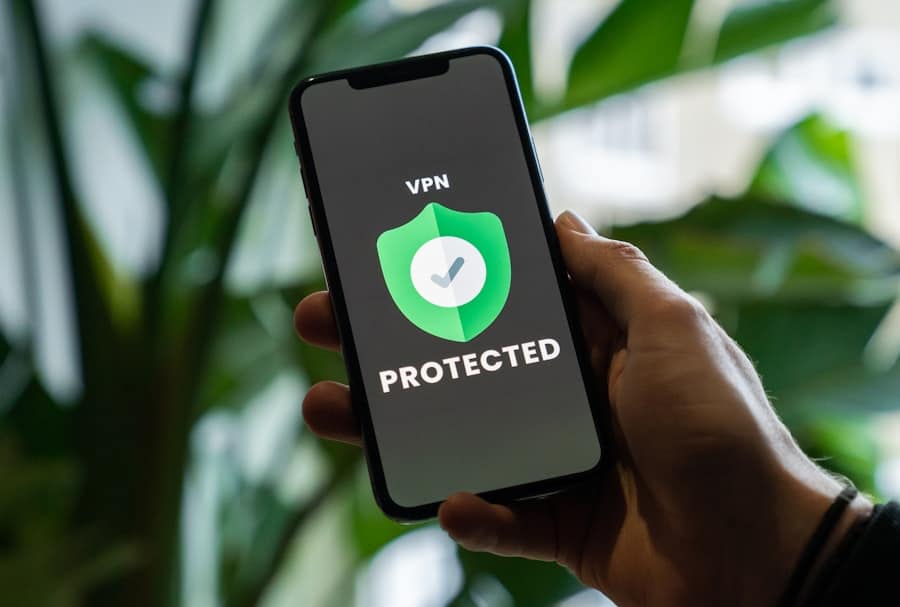In the digital age, where our lives are increasingly intertwined with technology, the significance of strong passwords cannot be overstated. Passwords serve as the first line of defense against unauthorized access to personal and sensitive information. A weak password can be easily guessed or cracked by cybercriminals, leading to identity theft, financial loss, and a myriad of other security breaches.
The consequences of a compromised password can be severe, affecting not only individuals but also organizations that rely on the integrity of their data. For instance, in 2019, the Capital One data breach exposed the personal information of over 100 million customers, primarily due to a misconfigured firewall and weak security practices, highlighting the critical need for robust password management. Moreover, the increasing sophistication of cyberattacks necessitates a proactive approach to password security.
Hackers employ various techniques, such as brute force attacks and social engineering, to exploit weak passwords. A study by the cybersecurity firm SplashData revealed that “123456” and “password” were among the most commonly used passwords in 2020, illustrating a troubling trend where users opt for convenience over security. This complacency can have dire repercussions, as evidenced by high-profile breaches that have resulted in significant financial losses and reputational damage for companies.
Therefore, understanding the importance of strong passwords is essential for safeguarding personal and organizational data in an era where cyber threats are omnipresent.
Key Takeaways
- Strong passwords are crucial for protecting personal and sensitive information from unauthorized access.
- Create a secure password by using a combination of uppercase and lowercase letters, numbers, and special characters.
- Password managers are a convenient and secure way to store and manage all your passwords in one place.
- Two-factor authentication adds an extra layer of security by requiring a second form of verification, such as a code sent to your phone.
- Regularly updating passwords helps to prevent unauthorized access and keeps your accounts secure.
Creating a Secure Password
Creating a secure password is a fundamental step in protecting oneself from cyber threats. A strong password typically consists of a combination of upper and lower case letters, numbers, and special characters. The length of the password is equally important; experts recommend using at least 12 to 16 characters to enhance security.
For example, instead of using a simple word like “sunshine,” one might create a more complex password such as “5un$h!ne2023!” This not only makes it harder for attackers to guess but also adds an extra layer of complexity that can thwart automated cracking tools. In addition to complexity, users should avoid using easily obtainable personal information in their passwords.
Instead, employing a passphrase—a sequence of random words or a memorable sentence—can be an effective strategy. For instance, “BlueSky!Dances@Night2023” combines randomness with personal significance, making it easier to remember while still being difficult for others to guess. Ultimately, the goal is to create a password that is both secure and manageable, striking a balance between complexity and memorability.
Using a Password Manager

Given the multitude of accounts that individuals manage today, remembering unique and complex passwords for each one can be daunting. This is where password managers come into play. A password manager is a software application designed to store and manage passwords securely.
It allows users to generate strong passwords and automatically fill them in when logging into websites or applications, significantly reducing the risk of using weak or repeated passwords across multiple accounts. Password managers utilize strong encryption methods to protect stored passwords, ensuring that even if the data is compromised, it remains unreadable without the master password. Popular options like LastPass, Dashlane, and 1Password offer features such as password generation, security audits, and breach alerts.
For example, if a user’s email account is involved in a data breach, the password manager can notify them to change their password immediately. By centralizing password management in this way, users can enhance their overall security posture while simplifying their online experience.
Two-Factor Authentication
Two-factor authentication (2FA) adds an additional layer of security beyond just a username and password. By requiring a second form of verification—such as a text message code, an authentication app code, or biometric verification—2FA significantly reduces the likelihood of unauthorized access. Even if a hacker manages to obtain a user’s password through phishing or other means, they would still need the second factor to gain entry into the account.
Many online services now offer 2FA as an option or even as a requirement for enhanced security. For instance, Google provides users with the option to receive verification codes via SMS or through its Google Authenticator app. This added step may seem inconvenient at first; however, it is a small price to pay for increased security.
The implementation of 2FA has proven effective in thwarting many attacks; according to a report by Microsoft, accounts protected by 2FA are 99.9% less likely to be compromised. As cyber threats continue to evolve, enabling two-factor authentication is becoming an essential practice for anyone looking to safeguard their online presence.
Regularly Updating Passwords
Regularly updating passwords is another critical aspect of maintaining strong cybersecurity practices. Cybercriminals are constantly developing new methods to breach accounts, making it essential for users to change their passwords periodically. While there was once a belief that changing passwords every few months was sufficient, recent guidance from cybersecurity experts suggests that users should update their passwords whenever there is a suspicion of compromise or after significant data breaches.
For example, if a user learns that their email provider has experienced a data breach, they should immediately change their password and consider updating passwords for any accounts linked to that email address. Additionally, adopting a routine schedule for changing passwords—such as every six months—can help mitigate risks associated with long-term password use. This practice not only helps protect against unauthorized access but also encourages users to remain vigilant about their online security.
Recognizing Phishing Attempts

Phishing attempts are one of the most common tactics employed by cybercriminals to gain access to sensitive information. These attacks often come in the form of deceptive emails or messages that appear legitimate but are designed to trick users into revealing their passwords or other personal information. Recognizing these attempts is crucial for maintaining cybersecurity.
g., “Dear Customer”), and suspicious links or attachments. For instance, an email claiming to be from a bank may ask users to verify their account information by clicking on a link that leads to a fraudulent website designed to mimic the bank’s official site. Users should always scrutinize URLs before clicking on them; hovering over links can reveal their true destination without actually clicking on them.
Additionally, legitimate organizations will never ask for sensitive information via email. By being aware of these red flags and exercising caution when interacting with unsolicited communications, individuals can significantly reduce their risk of falling victim to phishing scams.
Securely Sharing Passwords
In certain situations, sharing passwords becomes necessary—whether for collaborative work environments or family accounts. However, sharing passwords poses inherent risks if not done securely. Traditional methods such as sending passwords via email or text message are fraught with vulnerabilities; these channels can be intercepted by malicious actors.
To share passwords securely, individuals should consider using password managers that offer secure sharing features. For example, LastPass allows users to share specific passwords with trusted contacts without revealing the actual password itself; recipients can access the account without ever seeing the password directly. Alternatively, encrypted messaging apps like Signal or WhatsApp can provide a more secure means of sharing sensitive information compared to standard SMS or email services.
By utilizing these secure methods for sharing passwords, individuals can collaborate effectively while minimizing the risk of unauthorized access.
Recovering Lost or Forgotten Passwords
Despite best efforts at creating and managing passwords securely, there may come a time when users forget their credentials or lose access to their accounts altogether. Fortunately, most online services provide mechanisms for recovering lost or forgotten passwords through various means such as email verification or security questions. When initiating a password recovery process, users should ensure they are on the legitimate website and not falling victim to phishing attempts disguised as recovery requests.
It is advisable to use recovery options that involve two-factor authentication whenever possible; this adds an extra layer of security during the recovery process. For instance, if an account recovery request triggers an SMS code sent to the user’s registered phone number, this helps verify that the request is legitimate. In cases where users have lost access to their recovery email or phone number, some services offer alternative recovery options such as identity verification through government-issued IDs or trusted contacts who can vouch for the user’s identity.
While recovering lost passwords can sometimes be cumbersome and time-consuming, following these best practices ensures that users can regain access while maintaining their account’s security integrity.
In addition to exploring the “Step-by-Step Tutorial for Managing Password Security,” you might find it beneficial to delve into related topics that enhance your overall digital security and user experience. For instance, understanding how to effectively manage customer interactions can be crucial for businesses aiming to protect sensitive information. A relevant article that complements this topic is “SmartSender: Your Chatbot Platform for Seamless Customer Interactions.” This piece provides insights into how automated systems can streamline communication while maintaining security protocols. You can read more about it by visiting the following link: SmartSender: Your Chatbot Platform for Seamless Customer Interactions.
FAQs
What is password security?
Password security refers to the measures and practices put in place to protect passwords from unauthorized access, theft, or compromise. It involves creating strong, unique passwords and safeguarding them from being stolen or hacked.
Why is password security important?
Password security is important because passwords are the first line of defense against unauthorized access to personal and sensitive information. Weak or compromised passwords can lead to identity theft, financial loss, and privacy breaches.
What are the best practices for managing password security?
Some best practices for managing password security include using unique passwords for each account, creating strong passwords with a combination of letters, numbers, and special characters, using a password manager, enabling two-factor authentication, and regularly updating passwords.
How can I create a strong password?
To create a strong password, use a combination of upper and lower case letters, numbers, and special characters. Avoid using easily guessable information such as birthdays, names, or common words. Aim for a password that is at least 12 characters long.
What is a password manager and how does it help with password security?
A password manager is a tool that securely stores and manages passwords for various online accounts. It helps with password security by generating strong, unique passwords for each account, storing them in an encrypted database, and automatically filling them in when needed.
How often should I change my passwords?
It is recommended to change passwords regularly, at least every 3-6 months, especially for accounts that contain sensitive information or are used for financial transactions. Additionally, passwords should be changed immediately if there is a suspicion of compromise.

